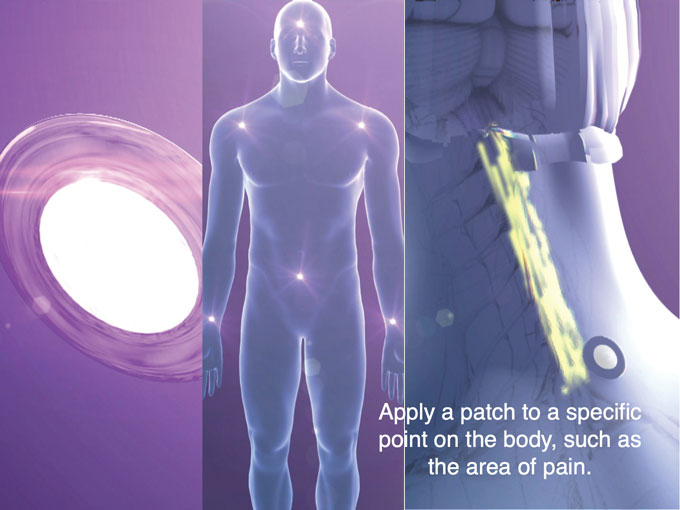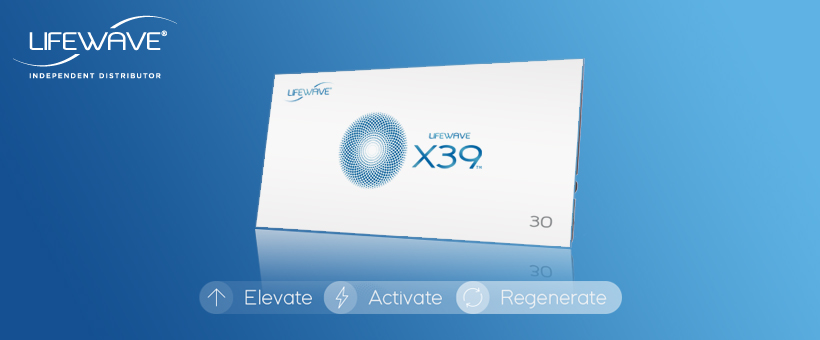Infrared light therapy has emerged as a game-changing technique for improving sports performance and enhancing athleticism. By harnessing the power of infrared light, athletes can experience a range of benefits, from reducing muscle soreness and inflammation to promoting faster recovery and enhancing overall endurance. As an athlete, incorporating infrared light therapy into your training routine can unlock a new level of performance and help you achieve your goals faster and more efficiently. Discover how this cutting-edge therapy is revolutionizing the world of sports and unlocking the full potential of athletes across various disciplines.
Benefits of Infrared Light Therapy
When it comes to athletic performance, the use of Infrared Light Therapy has been gaining popularity due to its numerous benefits. Let’s take a closer look at some of the ways in which this therapy can enhance your performance and overall well-being.
Increased Blood Circulation
One of the key benefits of Infrared Light Therapy is its ability to increase blood circulation. By using infrared light, the therapy promotes the dilation of blood vessels, allowing for better circulation throughout your body. This increased blood flow delivers more oxygen and nutrients to your muscles, while also removing waste products more efficiently. As a result, your muscles receive the necessary fuel they need to perform at their best, leading to enhanced athletic performance.
Pain Relief and Muscle Recovery
Infrared Light Therapy has also been found to provide effective pain relief and aid in muscle recovery. The therapy works by reducing inflammation and swelling, which are often the culprits behind muscle soreness and discomfort. By targeting deep into the tissues, infrared light helps accelerate the healing of injuries by increasing blood flow and promoting the relaxation of muscles. This can be especially beneficial for athletes who engage in intense workouts or frequently experience muscle fatigue.
Enhanced Metabolism and Energy Production
In addition to its impact on blood circulation and muscle recovery, Infrared Light Therapy also plays a role in metabolism and energy production. The therapy activates mitochondria, which are the powerhouses of our cells responsible for producing energy in the form of ATP. By enhancing ATP synthesis and improving cellular respiration, infrared light stimulates the body’s energy production processes. This increased energy can translate to improved stamina, allowing athletes to push themselves further and achieve higher levels of performance.
Effects of Infrared Light Therapy on Athletic Performance
With a better understanding of the benefits of Infrared Light Therapy, let’s delve into the specific effects it can have on athletic performance.
Improved Endurance and Performance
By increasing oxygen availability to your muscles, Infrared Light Therapy can greatly improve your endurance and overall performance. The therapy promotes better blood flow, ensuring that your muscles receive an adequate supply of oxygenated blood during physical activity. This oxygen is essential for optimal muscle function and can help delay the onset of fatigue, allowing you to perform at your peak for longer durations.
Reduced Muscle Fatigue and Soreness
Muscle fatigue and soreness are common challenges faced by athletes, but Infrared Light Therapy can help alleviate these issues. The therapy aids in the faster removal of lactic acid, which is a byproduct of intense exercise that can contribute to muscle fatigue. Additionally, by reducing muscle damage and inflammation, infrared light can mitigate the extent of soreness experienced post-exercise. This means less downtime and a quicker recovery, allowing you to get back to your training routine sooner.
Injury Prevention and Faster Recovery
Another significant benefit of Infrared Light Therapy for athletes is its potential for injury prevention and faster recovery. By enhancing blood circulation, the therapy ensures that your muscles receive the necessary nutrients and oxygen to stay healthy and strong. This can help prevent injuries caused by muscle imbalances or insufficient recovery. Additionally, the increased blood flow and accelerated healing provided by infrared light can expedite the recovery process in case an injury does occur, allowing you to get back to your training regime in a shorter amount of time.
How Infrared Light Therapy Works
To truly grasp the effects and benefits of Infrared Light Therapy, it’s important to understand how this therapy works on a cellular level.
Penetration of Infrared Light into Tissues
Infrared light used in therapy has a longer wavelength than visible light, allowing it to penetrate the skin and reach deeper tissues. This deeper penetration is what sets infrared light therapy apart from other treatments and creates its potential for profound effects. By reaching the cellular level, infrared light can activate various processes that lead to improved athletic performance and overall well-being.
Activation of Cellular Energy Production
Once infrared light reaches the cells, it stimulates the activation of mitochondria, which are responsible for energy production. Mitochondria use the energy from the light to enhance ATP synthesis, providing a boost to the body’s energy production processes. As a result, athletes may experience increased endurance, improved stamina, and better overall performance.
Stimulation of Nitric Oxide Release
Infrared Light Therapy also stimulates the release of nitric oxide, which has a vasodilatory effect on blood vessels. This vasodilation further enhances blood circulation, allowing for better nutrient and oxygen delivery to the muscles. Nitric oxide release can also help in the relaxation of muscles and reduce tension, promoting a state of relaxation and aiding in stress reduction.
Different Types of Infrared Light Therapy
Infrared Light Therapy can be administered in various ways, depending on individual preferences and needs. Here are some of the most common types of therapy available:
Infrared Saunas
One popular option for Infrared Light Therapy is the use of infrared saunas. These saunas emit infrared light that is absorbed by the body, promoting relaxation and providing the therapeutic benefits of infrared exposure. Infrared saunas can help improve blood circulation, reduce muscle soreness, and aid in detoxification.
Infrared Lamps and Panels
Another option for Infrared Light Therapy involves using lamps or panels that emit infrared light. These devices can be placed in specific areas of the body that require targeted treatment. The focused infrared light can penetrate deep into the tissues, providing the desired therapeutic effects.
Infrared Beds and Wraps
For a more comprehensive treatment, infrared beds and wraps offer a full-body experience. These products emit infrared light, enveloping your body in therapeutic warmth. Infrared beds and wraps are often used for relaxation, pain relief, and muscle recovery, providing a rejuvenating experience for athletes.
Infrared Light Therapy and Blood Circulation
One of the primary mechanisms by which Infrared Light Therapy enhances athletic performance is through its positive impact on blood circulation.
Dilation of Blood Vessels
Infrared light has the ability to cause the dilation of blood vessels, leading to increased blood circulation. This vasodilation allows more blood to flow through the vessels, ensuring that muscles receive a sufficient supply of oxygen and nutrients during physical activity.
Increased Oxygen and Nutrient Delivery
With improved blood circulation, oxygen and nutrient delivery to the muscles are significantly enhanced. Oxygen is crucial for muscle performance and endurance, as it helps in the production of ATP, the energy currency of our cells. The increased nutrient delivery also aids in muscle recovery and helps prevent muscle imbalances or deficiencies.
Removal of Waste Products
Effective blood circulation facilitated by Infrared Light Therapy also helps remove waste products from the muscles more efficiently. Waste products, such as lactic acid, can build up during intense exercise and contribute to muscle fatigue and soreness. By promoting better blood flow, infrared light therapy helps carry these waste products away from the muscles, allowing for a quicker recovery and reducing the risk of muscle damage.
Pain Relief and Muscle Recovery with Infrared Light Therapy
In addition to its impact on blood circulation, Infrared Light Therapy is highly beneficial for pain relief and muscle recovery.
Reduction of Inflammation and Swelling
Infrared Light Therapy has been shown to have an anti-inflammatory effect, reducing inflammation and swelling in the muscles. This can be particularly helpful for athletes who experience chronic inflammation due to repetitive motions or intense exercise. By reducing inflammation, infrared light can ease pain and discomfort, allowing athletes to train and perform at their best.
Accelerated Healing of Injuries
Infrared Light Therapy can speed up the healing process for sports-related injuries. The therapy promotes blood flow to the injured area, providing the necessary nutrients and oxygen for faster repair. Additionally, the increased blood circulation aids in removing waste products and toxins that may hinder the healing process. This can be especially beneficial for athletes who need to recover quickly and get back to their training routine as soon as possible.
Relaxation and Stress Reduction
Another noteworthy benefit of Infrared Light Therapy is its ability to induce relaxation and reduce stress. As the therapy promotes the release of nitric oxide, blood vessels relax, and muscles become less tense. This relaxing effect can help athletes unwind after a rigorous training session, enhance recovery, and reduce the risk of stress-related injuries.
Infrared Light Therapy for Metabolism and Energy Production
The impact of Infrared Light Therapy on metabolism and energy production is essential for enhancing athletic performance.
Activation of Mitochondria
Infrared Light Therapy plays a significant role in activating mitochondria, which are responsible for producing energy in the form of ATP. ATP is crucial for muscle function, and an increase in ATP synthesis leads to enhanced energy levels and improved athletic performance. By stimulating the mitochondria, infrared light helps ensure that your muscles have an ample supply of energy during physical activity.
Enhanced ATP Synthesis
The therapy’s activation of mitochondria also leads to enhanced ATP synthesis. ATP provides the energy required for muscle contraction and overall movement. By increasing the production of ATP through Infrared Light Therapy, athletes can experience a boost in overall energy availability, allowing them to perform at a higher intensity and for longer durations.
Improved Cellular Respiration
Cellular respiration refers to the process in which cells use oxygen to produce energy. Infrared Light Therapy improves cellular respiration by increasing oxygen availability to the muscles. With improved oxygen supply, muscles can efficiently generate the energy needed for optimal performance. The result is improved endurance, reduced fatigue, and enhanced athletic capabilities.
Improving Endurance and Performance with Infrared Light Therapy
Infrared Light Therapy offers several key benefits that can significantly improve an athlete’s endurance and performance.
Increased Oxygen Availability to Muscles
By increasing blood circulation, Infrared Light Therapy facilitates the delivery of oxygen to the muscles. Oxygen is a vital element for energy production in the muscles, and a steady and ample supply of oxygen enhances endurance. With improved oxygen availability, athletes can sustain high-intensity exercises for longer periods, pushing their limits and achieving higher levels of performance.
Improved Stamina and Aerobic Capacity
Infrared Light Therapy’s impact on oxygen delivery also leads to improved stamina and aerobic capacity. As the muscles receive a consistent supply of oxygen, they can better utilize it during endurance activities. This leads to prolonged aerobic performance, allowing athletes to maintain a higher intensity without experiencing the same level of fatigue. The enhanced stamina and aerobic capacity can greatly benefit athletes participating in endurance sports, such as long-distance running or cycling.
Enhanced Lactate Clearance
Intense exercise often leads to the production of lactic acid, which can contribute to muscle fatigue and hinder performance. Infrared Light Therapy has been found to enhance lactate clearance, allowing the body to remove lactic acid more efficiently. This means that athletes can recover faster between intense bouts of exercise, leading to improved overall performance and reduced muscle fatigue.
Reducing Muscle Fatigue and Soreness with Infrared Light Therapy
Muscle fatigue and soreness are common challenges faced by athletes, but Infrared Light Therapy can play a vital role in alleviating these issues.
Faster Removal of Lactic Acid
Infrared Light Therapy promotes faster removal of lactic acid from the muscles. Lactic acid is produced during intense exercise and can contribute to muscle fatigue and soreness. By accelerating the clearance of lactic acid, infrared light therapy aids in reducing muscle fatigue, allowing athletes to recover more quickly and perform at their best.
Reduced Muscle Damage and Inflammation
Intensive workouts can sometimes lead to muscle damage and inflammation, hindering both performance and recovery. However, Infrared Light Therapy has been shown to reduce muscle damage and inflammation. The therapy’s ability to stimulate blood flow and enhance nutrient delivery helps repair damaged muscle fibers, promoting faster recovery and reducing the risk of future injuries.
Relief of Post-Exercise Stiffness
After a rigorous training session, athletes often experience post-exercise stiffness. Infrared Light Therapy can help relieve this discomfort by increasing blood circulation and promoting muscle relaxation. As the therapy reduces inflammation and improves tissue repair, athletes may find themselves recovering more quickly and experiencing less post-exercise stiffness. This means that they can get back to their training routine sooner and perform at their best.
Conclusion
Infrared Light Therapy offers promising potential as a non-invasive sports performance enhancement tool. The therapy’s ability to improve blood circulation, aid in pain relief and muscle recovery, and enhance metabolism and energy production make it an attractive option for athletes at all levels. Whether you’re a professional athlete looking to achieve peak performance or a recreational athlete seeking to maximize your workouts, Infrared Light Therapy holds immense promise. As research continues to explore the various applications and benefits of this type of therapy, athletes can look forward to additional opportunities to optimize their performance and overall well-being. So why wait? Consider incorporating Infrared Light Therapy into your training routine and unlock its potential to take your athletic performance to new heights.





